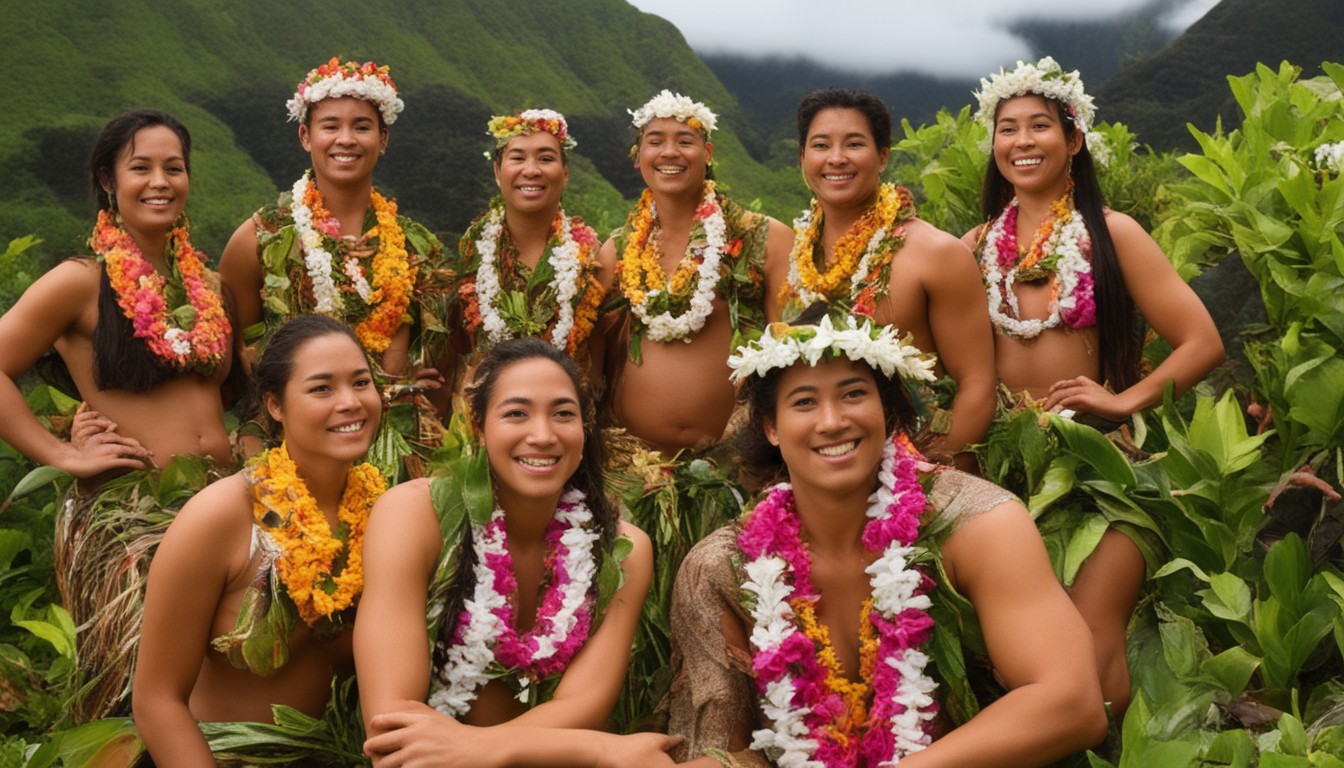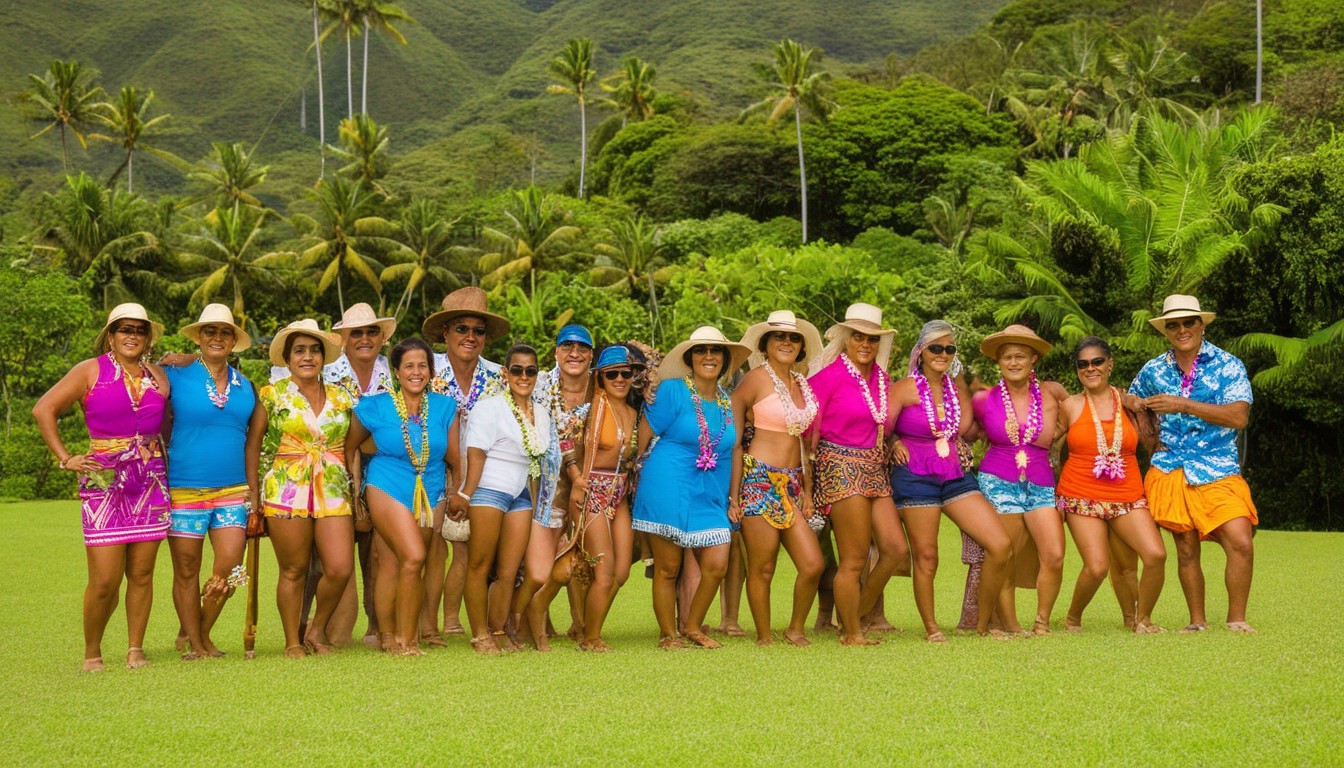With its shimmering beaches and lush rainforests, Hawaii attracts visitors from around the world. But before you book your tickets, you may wonder: What language do they speak in Hawaii?
The answer is more complex than you’d expect. While English and Hawaiian are the official languages, the linguistic diversity runs deep.
In this post, I’ll share insights into the common languages spoken on the Pacific island and how they fit into Hawaiian culture and history.
As a bonus, you’ll find a glimpse into the native language and some of my favorite phrases!
The Languages Spoken in Hawaii
Let’s take a closer look at the languages you’ll come across in the Aloha State.

English
English is an official and dominant language in the Hawaiian archipelago. It reflects the American cultural influence since Hawaii’s statehood back in 1959.
Most Hawaiian residents speak English. Yet, around a quarter report using another language at home, especially in populous Honolulu County.
According to a 2016 report, 326,893 people (25.4% of the statewide population) used something other than English at home.
The percentages varied slightly across the counties, though:
- 27.8% in Honolulu County
- 18.7% in Hawaii County
- 20.7% in Maui County
Hawaiian
Hawaiian, known as ʻŌlelo Hawaiʻi, is the other official language and the native tongue. It’s a Polynesian language bearing similarities to Tongan and Samoan but is still distinct.
Originally, it was passed down orally through chants and stories. However, the oral language gained a written form around the 1820s.
Around 18,000 people report that they speak both Hawaiian and English languages at home. Other sources estimate that the number of Hawaiian speakers is higher, at 25,000, give or take.
That said, this wasn’t always the case in the 50th State. The indigenous language was banned for a while and nearly eliminated!
For instance, only 32 children spoke Hawaiian by 1985. Hawaiian was also listed as “critically endangered” by the UN. But I’ll discuss how the Hawaiian people kept the language alive in a minute!
Hawaiian Creole
Hawaiian Creole (sometimes called Pidgin) is a hybrid language that blends Hawaiian with the Pidgin English of China and the Pacific.
For a while, the Creole language was stigmatized and considered sub-standard, but it’s now gaining more acceptance.
Other Languages
Going by the estimates in the 2016 report, the top languages spoken in the islands after English include Tagalog, with 58,345 Hawaiian speakers, which rounds up to 17.8% of the population. Next in line are Ilocano at 16.5% and Japanese at 14%.
However, you’ll also hear other tongues, including:
- Spanish
- Korean
- Samoan
- Vietnamese
- Cantonese
- Marshallese
The Ban and Revival of the Hawaiian Language

In 1896, after the overthrow of the Hawaiian Kingdom, Hawaiian was banned in schools. Using it brought punishment to students and teachers. Parents could not even speak Hawaiian to their children in public spaces!
This repressive policy nearly killed the language over the ensuing decades. Naturally, losing Hawaiian meant losing the connection to Hawaiian cultural identity and heritage.
Thankfully, things started changing around 1978.
Back then, a constitutional amendment to Section 4 of Article XV made Hawaiian an official state language alongside English. This granted Hawaiian important legal status and recognition Plus, it opened the door to expanding its usage in official domains.
For one, some public schools began using Hawaiian after a long period of an English-only education system. The State Department of Education also established the groundbreaking Hawaiian Language Immersion Program (HLIP).
This education initiative delivers fully through the native language medium and gradually integrates English starting in 5th grade. Today, HLIP K-12 programs exist on six major islands in the entire archipelago.
Interestingly, there are also Hawaiian-language preschools like Aha Pūnana Leo which celebrated its 40th anniversary recently. So far, the program boasts 7,000 students and alumni!
A Glimpse into the Hawaiian Language
Hawaiian contains only 13 letters: vowels (A E I O U), consonants (H K L M N P W), and the ‘okina.
But don’t let its simple spelling fool you. Complexity lies in the pronunciation!
The ‘okina represents a glottal stop, like the pause in “oh-oh.”
Some words also feature macron kahakō (lines) over letters, which signals that you need to extend the vowel sounds. For visitors, mastering these aspects takes practice.
Yet, I love hearing phrases and words like:
- Keiki: Child
- Mahalo: Thank you
- A’ ole pilikia: No problem
- A hui hou: Until we meet again
To deepen your vocab, I recommend tuning into the Hawaiian Word of the Day radio feature. This daily segment encourages using Hawaiian in everyday conversation, preserving its role as a living language.
After all, there is always more to discover about ‘Ōlelo Hawai‘i!
FAQs
Is “aloha” “hello” in Hawaii?
While “aloha” is used in greetings, its meaning goes deeper than “hello,” conveying love, peace, and respect. I don’t think there’s a perfect English equivalent for this Hawaiian term that embodies the same profound concepts, though.
How do you respond to “aloha”?
Respond to “aloha” with a simple “aloha” back or even a casual “mahalo.” Avoid overdoing it with a long, drawn-out “aloha.” Just keep it short and sweet like the locals!
What is “yes” in Hawaii?
The Hawaiian word for “yes” is “ae” (pronounced “eye”). Meanwhile, no is a’ole.
Is it hard to learn Hawaiian?
Hawaiian grammar is relatively straightforward. Yet, nailing the pronunciation and finding native speakers to practice with on a daily basis are keys to really mastering the language.
Can I speak English in Hawaii?
Yes, you can get by with just the English language in the Aloha State as a visitor. However, learning a few Hawaiian phrases enriches the cultural experience. Locals appreciate the effort, too!
What language is used in Kamehameha schools?
Students at Kamehameha High School programs need to demonstrate Hawaiian proficiency in speaking, listening, writing, and reading!
Final Thoughts

While Hawaiian is far from The subtropical paradise is home to a wide range of languages that reflect its history as a melting pot of cultures.
Visitors can appreciate this heritage by tuning their ears to the blend of languages spoken on the Hawaiian islands and learning the history that comes with each one.
What about you? Do you have a favorite Hawaiian phrase yet?
